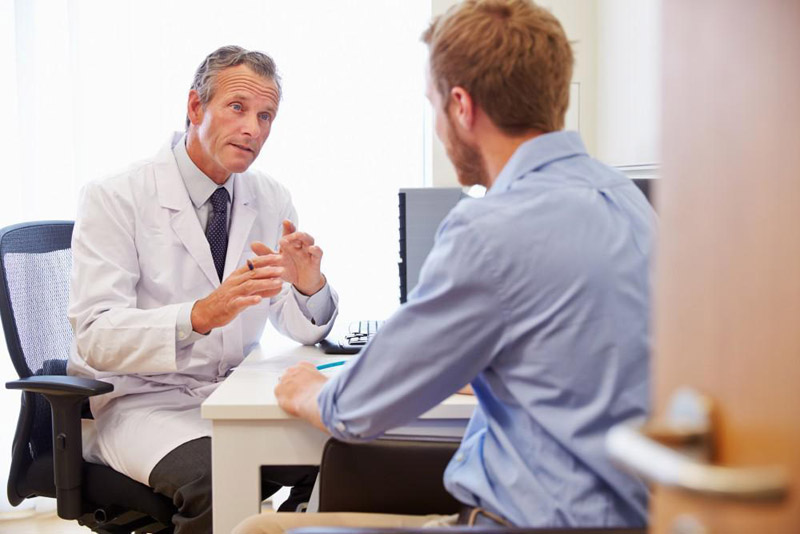Call Us
310-274-4401
Blog
How to Prevent a Rosacea Flare-up

Rosacea affects more than 14 million people throughout the United States. This chronic skin condition causes redness and visible blood vessels in your face. People with rosacea appear to be blushing. It is most common in middle-aged women with fair skin.
Rosacea does not stop at rosy cheeks. It can affect your forehead, chin, and neck, and your skin may develop a bumpy appearance that looks like acne. If you have rosacea, you know that symptoms worsen during flares. That is because certain environmental factors can trigger rosacea flare-ups.
Board-certified dermatologist Vicki Rapaport, MD, and the team at Rapaport Dermatology of Beverly Hills provide a full range of dermatology care to patients in and around Beverly Hills and Culver City, California. We see many patients with chronic skin disorders like rosacea, and we can help you get yours under control.
April is Rosacea Awareness Month. If you are looking to better manage your rosacea, try these tips that Dr. Rapaport recommends for preventing a flare-up.
Mind Your Diet
The foods you eat can have an influence on your rosacea, triggering symptoms to flare up. For example, spicy foods have chemicals that expand blood vessels, increase blood flow, and interact with heat receptors of the skin — all of which can aggravate rosacea. In fact, 78% of people with rosacea say that hot sauce and peppers cause immediate flare-ups.
But your food does not have to be spicy hot to cause your face to flush; high-temperature foods can do it, too. Foods at hot temperatures increase blood flow in a similar way to spicy foods. That goes for hot beverages as well.
While eating certain foods can trigger your rosacea, some foods can help calm it for some people. Certain foods known for their anti-inflammatory properties may help you ease your redness, for example:
- Melons
- Berries
- Pumpkins
- Zucchini
- Cucumbers
- Turmeric
Tip: Avoid spicy foods, and allow foods and beverages to cool down before consuming them to prevent triggering your rosacea. Add anti-inflammatory foods to your diet.
Go Easy on Cocktails
A poolside margarita may sound refreshing, but for people with rosacea, alcoholic beverages are a common trigger. Alcohol is a vasodilator, which means it relaxes and widens blood vessels, increasing blood flow, among other things.
Additionally, red wine contains tyramines, a substance derived from the amino acid tyrosine. Tyramines dilate blood vessels more rapidly, which can quickly trigger your rosacea symptoms.
Tip: If alcohol is a trigger for you, limiting or avoiding alcoholic beverages is your best bet for preventing a rosacea flare-up.
Keep Your Skin Protected, and Stay out of the Heat
Just a few minutes in direct sunlight can cause rosacea-prone skin to flush uncontrollably with redness. The hot summer months can worsen your symptoms. Wearing a wide-brimmed hat on sunny days and seeking shade whenever possible are some ways to prevent a rosacea flare.
You already know that sunscreen is important, but if you have rosacea, it is essential. Opt for SPF 30 or higher to keep your skin protected, especially in the summer. Also, remember to read the label carefully before putting anything on your skin. Look for moisturizers and sunscreens that are meant for sensitive skin and are perfume-free.
It is also important to keep cool. Increased heat can aggravate rosacea symptoms. Drink plenty of water on warm days to keep from overheating. It is a good idea to carry a small personal fan on especially warm days.
Tip: Be diligent in protecting your skin from sun exposure, and keep your body cool in warmer months.
Keep Stress in Check
Many people with rosacea count stress as a trigger for flares. When you feel stressed and your heart rate goes up, so does the redness in rosacea-prone skin. Engaging in stress-busting activities to counteract daily stress is an excellent way to keep rosacea flares at bay.
Different methods work for different people, so have fun trying a few ways that may help you reduce your stress and balance your life. Some ideas include yoga, meditation, listening to calming music, and getting a massage.
Tip: Find a stress-reliever that works for you, and keep your rosacea in a peaceful state.
Team up With a Dermatologist
While these tips may help you avoid rosacea flare-ups, Dr. Rapaport knows that you may need more advanced treatment to effectively manage rosacea. From prescription topical creams to antibiotics, Dr. Rapaport can help you find relief from rosacea symptoms.
If you are struggling with rosacea, we can help. There is no cure for rosacea, but you can manage symptoms and minimize the impact on your quality of life. To get started, call our office to schedule a visit with Dr. Rapaport.
